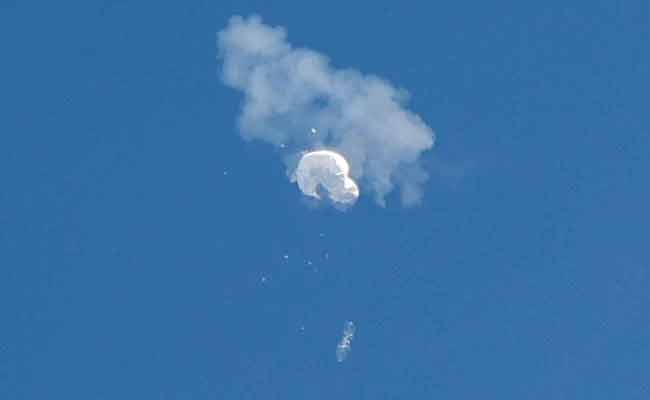Marking the latest escalation in the already worsening diplomatic ties between Washington and Beijing, the United States early on Sunday shot down a Chinese surveillance balloon that had been floating over American airspace for several days. The move triggered an angry response from Beijing, which had maintained that the balloon American authorities described as a “surveillance balloon”, was a civilian airship used for meteorological purposes having drifted off course.
After the balloon was shot down, the Chinese military said it now reserved “the right” to take the same measures if a similar situation arose. Pointing out that the U.S. government had acknowledged that the balloon did not present a military or physical threat, the Chinese Foreign Ministry said that “the U.S. use of force is a clear overreaction and a serious violation of international practice.”
“The U.S. used force to attack China’s civilian unmanned airship, which was an obvious overreaction,” said People’s Liberation Army Senior Colonel Tan Kefei, spokesperson for China’s Ministry of Defence. “We solemnly protest this move by the U.S. side and reserve the right to take necessary measures to deal with similar situations,” he said.
The balloon had first appeared in the skies over the western U.S. state of Montana. When it was making its way east across the continental U.S. and finally heading towards the waters of the Atlantic Ocean, U.S. President Joe Biden ordered for it to be shot down. A senior U.S. Defence official said that the plan to shoot the balloon down over water was developed due the risk of falling debris had it been shot over land.
The official added that Washington also mitigated the balloon’s intelligence value to China by shooting it down. “We also took immediate steps to protect against the balloon’s collection of sensitive information,” the official said.
U.S. officials pointed out that similar Chinese surveillance balloons had previously been observed in South Asia and East Asia and “violated the sovereignty of other countries”.
The unprecedented diplomatic exchange came at a time when both powers were looking to stabilise ties, with U.S. Secretary of State Antony Blicken’s now-cancelled visit to China on Monday. This would have been the first visit by a top U.S. diplomat since 2018 (The Hindu).





